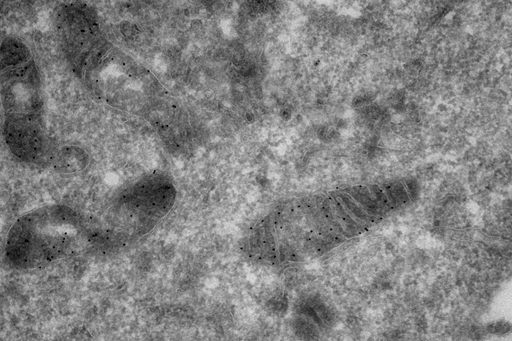Tokuyasu technique
The Tokuyasu technique involves neither sample dehydration with solvents nor resin-embedding. This means that antigens remain somewhat hydrated and easily accessible to antibodies.
A chemically-fixed, sucrose-infiltrated specimen is frozen, cryo-sectioned, thawed and dried in a protective layer of methylcellulose and sucrose and immunolabelled on-section. Although compression and knife scratch artefacts are typical of this technique it offers good ultrastructure preservation and superior antigenicity preservation. It also lends itself well to multiple labelling whereby different antibodies tagged with different size gold particles are applied to the same section sequentially and imaged together. It is typical for Tokuyasu sections to have areas with negative membrane contrast, i.e. the membranes appear bright against dark background as opposed to conventional preps where membrane contrast is positive.
